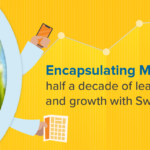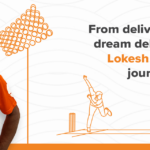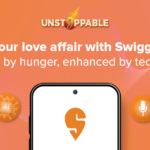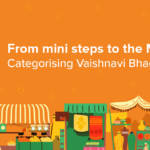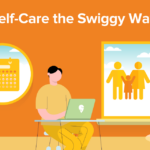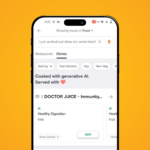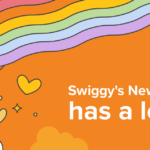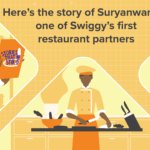Here’s our commitment towards inclusivity and accessibility.
Over the last year, Swiggy has transformed from being a food delivery platform to an on-demand convenience delivery platform, where consumers access everything from grocery and warm meals to personal care items and other essentials. It was also around then, and through organizations like Change.org that we came to realize just how many Indians with disabilities use Swiggy.
As per the World Health Organization, over 1 billion people currently experience disability. Globally, at least 2.2 billion people have near or distant vision impairment.
People with visual impairments were not able to easily use the Swiggy app since it wasn’t designed to be accessible. In line with our mission to elevate the quality of life of urban consumers by enabling unparalleled convenience, we realized that making Swiggy accessible to Indians with visual impairment was important to ensure convenience for all.
The easiest way to do this would be to enable screen readers which allow reading out focused text and content on the screen. However, this means our visually impaired users would not be able to enjoy the true experience of Swiggy’s intuitive UI (user interface) and UX (user experience) design. Hence, in early 2021, we started our journey to transform Swiggy’s approach to accessibility by solving for it at the product end.
Designing a User Interface keeping accessibility in mind
Starting with a customer backward approach, we researched how consumers with limited vision use our website and app. This helped us gather insights on what’s working and what’s not. Diving deeper, we did workshops with DEOC (Diversity And Equal Opportunity Centre) and put together a dedicated team whose mission is to ensure accessibility for all. This team has been working with engineers, designers, and others across the company to ensure that all our products are made with accessibility in mind.
From our research, we understood the many nuances that affect customer experience for people with physical disabilities. For example, while ordering food on Swiggy, users typically rely on information like cuisine, rating, and delivery time to make informed choices on what to order and from where. Considering this information was earlier available only as text on the user’s device screen, accessing it would naturally be a challenge to users with visual or motor disabilities.
To address this, we innovated with two kinds of support. The first is “switch access” which enables users with motor issues to operate the app with just two buttons. The other is a “talkback” feature for Android users and a “voiceover” feature for iOS users, both of which will deliver the information displayed on the screen in the right context rather than merely reading out the text. Changes like these make a tangible difference to their user experience.
To simplify accessibility, we have also made modifications to other important elements – the home screen, the restaurant listing screen, menu selections, navigation, payment, order tracking, and quick-action features. Read more about it here.
Making Swiggy India’s first truly accessible on-demand convenience platform
Today, on the International Day of persons with disability, we’d like to announce the first milestone in our accessibility journey. We’re making two of our biggest and most used offerings- food delivery, and our quick commerce grocery service, Instamart, accessible. These two services are available to millions of Indians and we’re confident that the accessibility features will enable us to deliver unparalleled convenience to more users every day.
Ordering food through Swiggy is accessible and hopefully, a quick and effortless experience. Users of Android, iOS, and MWeb will have access to these accessibility features. They can navigate using gestures in the menu and check out which simplifies the ordering flow. In iOS along with voice-over, we have implemented voice control using Siri which helps users with reduced mobility in food ordering flow. At present, we are 70% through with our efforts in making Instamart accessible to all and are working hard to add other segments like promo banners and post-order screens. In the first three months since we started making the changes, the daily orders from our accessible sessions have increased 12-fold. We are very excited and humbled to see this positive reaction from our users.
The journey of making Swiggy accessible has been insightful and fulfilling for all of us. We are immensely grateful for all those who helped us understand ways to solve these issues better. Our in-house designer, Prasanna Venkatesh who grew up with hearing impairment could understand the challenges faced by people with disability on a daily basis and acted as the cog in our mission of designing accessible solutions.
“While designing an application, we strive to make it available to the maximum number of people and deliver the best user experience. In today’s mobile world, accessibility is an important part of any app. Especially for a brand like Swiggy that is democratizing convenience by delivering everything users need from sanitizers to pizzas. I’m personally glad that at Swiggy, we realized this and acted on it, not just with a stop-gap solution but something that will make the true Swiggy experience accessible to all,” Prasanna Venkatesh, Senior Product Design Architect.
We are also grateful to accessibility evangelists like Aziz Minat whom we have been in touch with over the last many months for his meaningful and actionable inputs.
Digital Accessibility Standards
We understand that with these accessibility features, we have only tapped the tip of the iceberg. We will continue to interact with our users and learn from them so that we are solving the problem in the right way. We are doing more sessions with our design and product teams to ensure we are always thinking about accessibility as a high-priority requirement for any new changes. In addition to training, and awareness, we are also focusing on quality by doing regress testing with internal and external auditors.
It’s going to be an ongoing process for us, and we are always open to ideas on how we can make the Swiggy experience more convenient and inclusive. So, if you have any thoughts, don’t hesitate to drop in your comments. We are listening!
The author is the SVP, Consumer Platform (Product and Tech).
Author Bio
Madhusudhan Rao is the Chief Technology Officer at Swiggy.




































